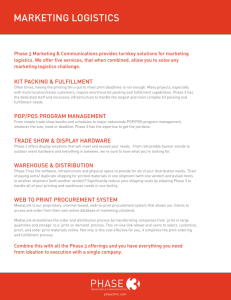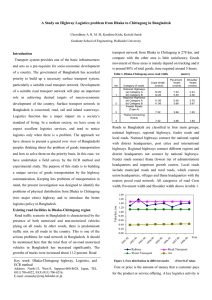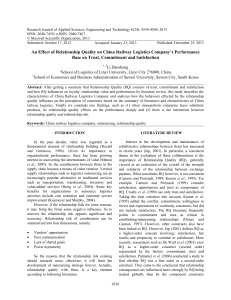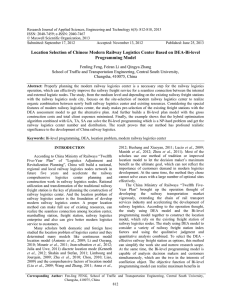Value Chain Analysis
advertisement
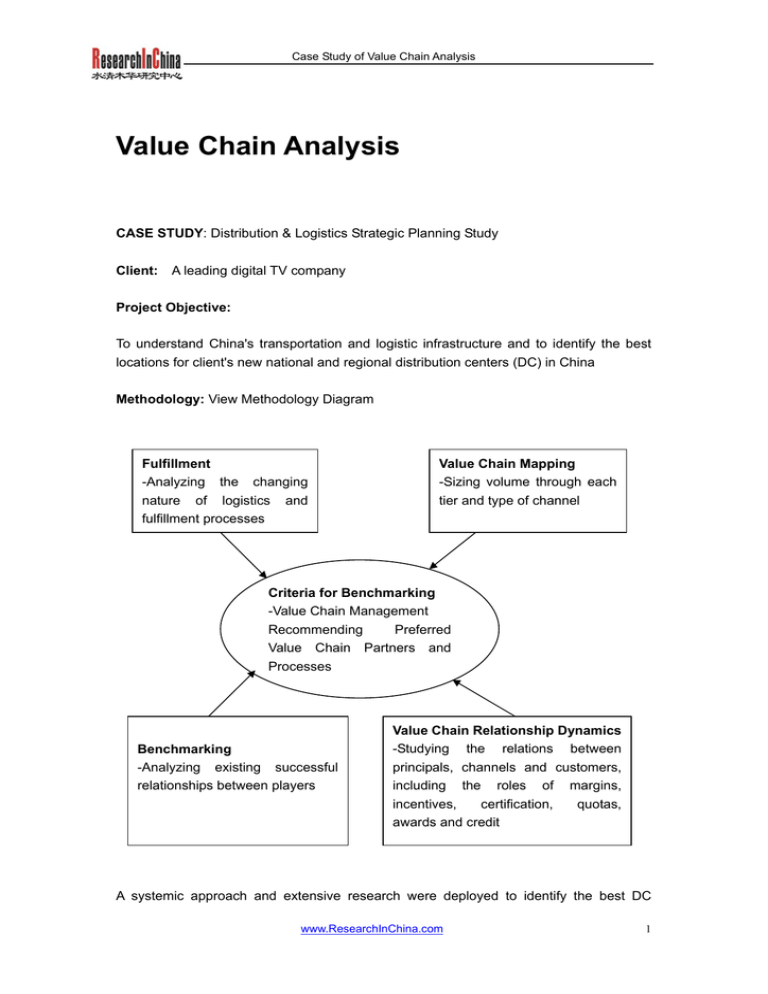
Case Study of Value Chain Analysis Value Chain Analysis CASE STUDY: Distribution & Logistics Strategic Planning Study Client: A leading digital TV company Project Objective: To understand China's transportation and logistic infrastructure and to identify the best locations for client's new national and regional distribution centers (DC) in China Methodology: View Methodology Diagram Fulfillment -Analyzing the changing nature of logistics and fulfillment processes Value Chain Mapping -Sizing volume through each tier and type of channel Criteria for Benchmarking -Value Chain Management Recommending Preferred Value Chain Partners and Processes Benchmarking -Analyzing existing successful relationships between players Value Chain Relationship Dynamics -Studying the relations between principals, channels and customers, including the roles of margins, incentives, certification, quotas, awards and credit A systemic approach and extensive research were deployed to identify the best DC www.ResearchInChina.com 1 Case Study of Value Chain Analysis locations for the client as shown in the methodology diagram. This involved the following approaches: -Conduct interviews with logistics service providers and industry experts to obtain up-to-date information on the most common logistics hub locations and Supply Chain Management (SCM) practices in China -Interview client executives to understand their current shipment patterns, frequency, volume and key shipment destinations -Conduct interviews with China government officers, resource persons and experts in relevant local government organizations and industry associations to obtain official data -Conduct extensive secondary research using Chinese official statistics, published industry reports, trade journals, news and internet media, government publications, private databases and other relevant resources ResearchInChina's report addressed the following: • Graphical representation of 4 major inland river networks, all railway networks and major air network connectivity in China • Charts and maps of the top 10 largest seaports, airports, railway hubs and river ports with the corresponding container volume (TEU/year) • Comprehensive data on the average shipment lead-times and recommendation of the best transportation mode (the shortest lead-time) • Advantages-disadvantages analysis of each transportation mode • Short-listing candidate locations for DC locations and comparing the cost factors (warehouse rentals, salary, freight charges) and non-cost factors (delivery, lead-time, logistics infrastructure, manpower availability) for each of the short-listed locations • Recommending the optimal locations for national DC as well as regional DCs • Scenario analysis of the potential business and legal implications from restructuring the client's distribution arrangements www.ResearchInChina.com 2
